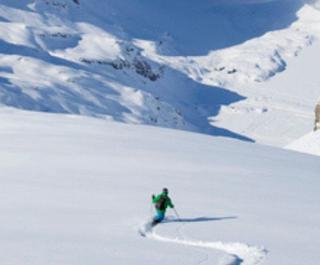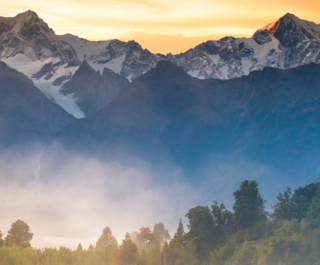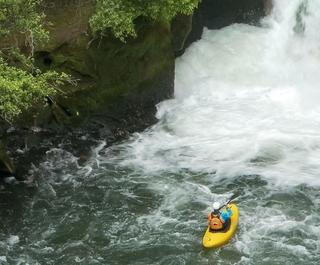
An ethereal morning mist drapes over Myanmar’s Inle Lake, smudging the horizon to meld water and sky in a silvery-grey monotone.
Our canoe edges out from the Novotel jetty, past Asian open-bill storks and black-winged stilts stalking the weedy shoals, before nudging through a thick carpet of water hyacinths sprouting delicate mauve blooms.
Reaching open water, the boatman throttles-up the longtail motor and we drone swiftly across the glassy surface, spraying up a feathery fantail behind us.
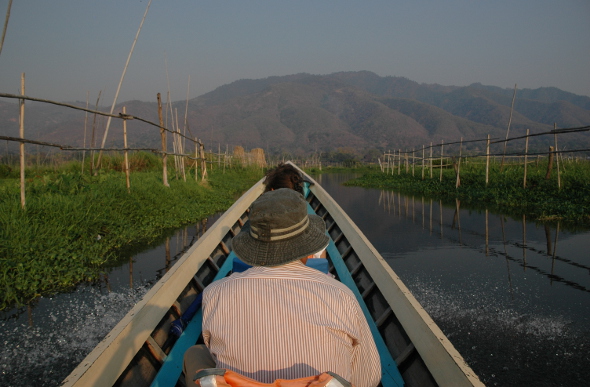 Driving through the floating gardens of Inle Lake, Myanmar. Photo: Briar Jensen
Driving through the floating gardens of Inle Lake, Myanmar. Photo: Briar Jensen
Inle Lake is in Shan State, eastern Myanmar, on a plain about 1,000 metres above sea level, with Shan Mountains as a backdrop. Approximately 22 kilometres long by 11 kilometres wide, the lake is shallow –about six metres at its deepest.
The local Intha people live in stilt houses over the lake, which is famous for its floating vegetable gardens – islands of accumulated weed and silt that are cultivated and staked to the lake bed with bamboo poles.
There are rustic hotels around the lake, but the newly-opened Novotel Inle Lake Myat Min is the only international hotel; there are no rickety bamboo balconies here.
The over-water villas are spacious and luxurious, with raked timber ceilings, a bed swathed in billowing nets and a lounge area opening onto a timber deck. A long infinity-edge pool overlooks the resort to the lake beyond, but my favourite spot is the deck of the Sunset Bar. As we sip cooling cocktails a red orb sun sinks into the lake and the dusky-pink sky is mirrored in the water at our feet.
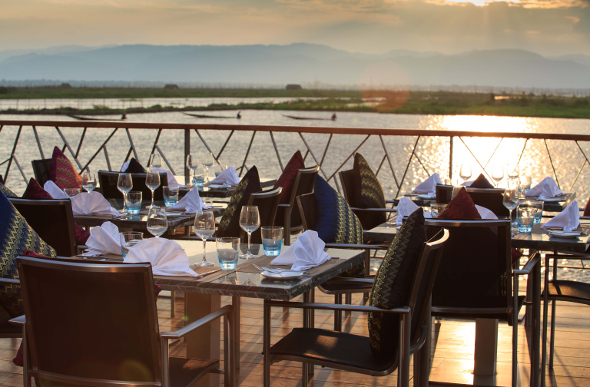 Sunset Bar at Novotel Inle Lake Myat Min, Myanmar. Photo: Accor
Sunset Bar at Novotel Inle Lake Myat Min, Myanmar. Photo: Accor
You can cycle to the local village of Maing Thauk or visit Red Mountain Winery, but the first priority is getting out on the water.
Life on the lake revolves around the daily market, which moves location between villages. There is a floating market, popular with tourists, but today’s market is in the village of Thaung Tho, at the southern end of the lake, allowing us a glimpse of life on the water.
Intha men manoeuvre traditional canoes – shallow-draft, chisel-ended, flat-bottomed slithers of teak – by balancing on one leg and rowing with the other, which they wrap around the single oar, while casting fishing nets of various shapes depending on the water depth.
Others haul up dripping clumps of lake-weed, which is dried for fertiliser, bailing furiously as the boats sink under the weight. Down muddy channels men claw sticky clay from the lake floor to be later dried for bricks.
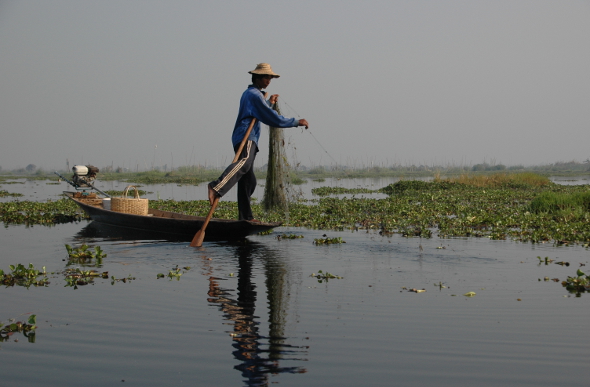 Intha fisherman on Inle Lake, Myanmar. Photo: Briar Jensen
Intha fisherman on Inle Lake, Myanmar. Photo: Briar Jensen
Power poles stride across the water trailing wires to stilt houses of timber and corrugated iron, some with satellite dishes. Industrious families rinse clothes from bamboo jetties, feed catfish in pens under houses, weave at large looms and hang freshly-dyed yarns out to dry.
Women in longyi skirts and conical hats hand-plough the field beside the market, where smoke drifts from a blacksmith’s embers as he hammers knives into shape, next to the barber whose customers wait under a shady tree.
There are few motorised vehicles; loads are carried in woven baskets slung on bamboo poles over the shoulder, or delivered by ox-drawn carts with wooden wheels. Pa-O women, distinctive with their red checked turbans, carry bamboo baskets across their back or balance enormous piles atop their heads as they weave between the stalls of fresh vegetables, flowers, kitchen utensils and clothes. Smiles are shy but genuine.
We follow another canal to Inthar Heritage House, a showcase of traditional stilt architecture, which doubles as a restaurant, offering hospitality training to local villagers. The bougainvillea draped veranda is a gorgeous spot for a cool drink overlooking the busy canal to farmers working the fields beyond.
It’s home to the Burmese Cat House, a project to reintroduce Burmese cats to their homeland, and we pat the pampered felines as they lounge languidly on their own day bed.
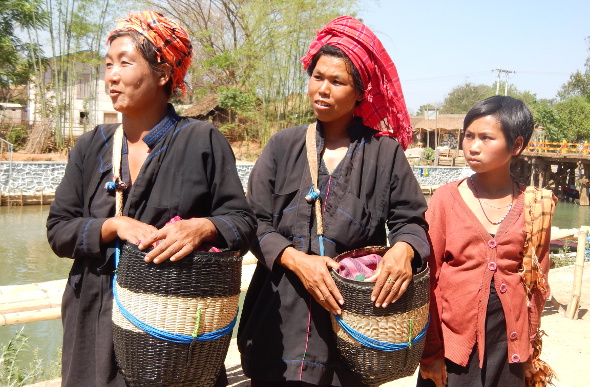 Pa-O women in traditional dress. Photo: Briar Jensen
Pa-O women in traditional dress. Photo: Briar Jensen
Some sections of the lake are so shallow we run aground, but are quickly rescued by nearby workers. The winding river to Inthein village is damned periodically with stick walls and our driver has to gun it through the narrow openings, barely the width of the boat, to counter the water rushing through.
Erosion, silting, fertiliser runoff and over fishing are issues the locals are slowly addressing, as they begin to realise the lake’s potential for tourism.
After lunch at Bamboo Forest Restaurant we walk to Inn Thein Pagoda, a collection of more than 1000 stupas dating from the 14th to 18th centuries. The collapsing stupas lining the hillside are gradually being cleared of overgrowth and slowly restored, some already replete in bright white paint and gleaming gold leaf.
With no disrespect to the conservation effort, the rundown ruins are hauntingly beautiful – the russet crumbling brick, the clawing vines, the serene face of a lichen-covered statue. In a way it’s a metaphor for Myanmar, as it disentangles itself from the clutches of military rule and slowly works towards a bright new future.
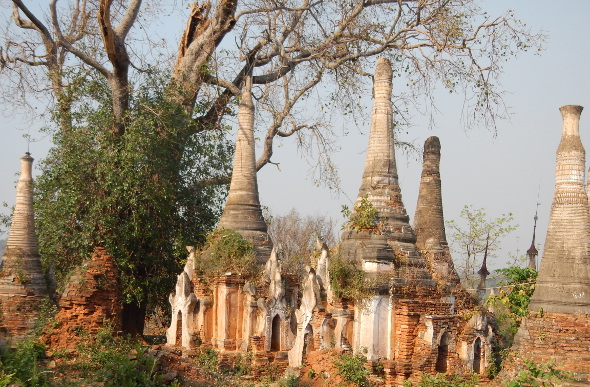 Stupas at Inn Thein Pagoda. Photo: Briar Jensen
Stupas at Inn Thein Pagoda. Photo: Briar Jensen
The writer was a guest of Accor Hotels, Qantas, Jetstar Asia and Exo Travel
.........................................................................................................................................................
Visit your local Flight Centre store or call 131 600 for more travel advice and the latest travel deals.
.........................................................................................................................................................


